Posted on May 15th, 2018 by Mary Lord
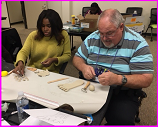 The Lemelson-MIT Program, located within the School of Engineering at the Massachusetts Institute of Technology (MIT), is hosting three hands-on professional development workshops this summer aimed at helping middle and high school teachers nurture their students’ creativity and inventive mindsets.
The Lemelson-MIT Program, located within the School of Engineering at the Massachusetts Institute of Technology (MIT), is hosting three hands-on professional development workshops this summer aimed at helping middle and high school teachers nurture their students’ creativity and inventive mindsets.
Midwest | July 11-13, 2018 at Fox Valley Technical College in Appleton, Wisc.
West Coast | July 25-27, 2018 at California Polytechnic State University in Pomona, Calif.
East Coast | August 1-3, 2018 at the Massachusetts Institute of Technology in Cambridge, Mass.
Read More
Filed under: For Teachers, Grades 6-8, Grades 9-12, K-12 Outreach Programs, Special Features | Comments Off on Lemelson-MIT Workshops for Teachers
Tags: creativity, Engineering Design, invention, Lemelson-MIT, professional development for teachers, Programs for Teachers, Resources for Teachers, STEM education, Summer Programs (Teachers)
Posted on January 7th, 2018 by Mary Lord
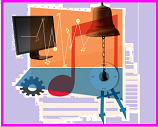 When “The Victors” peals from the 55-bell carillon high inside the University of Michigan’s Burton Tower, many students below can hum the famous fight song as they stroll. One group, though, also understands the engineering and skilled labor behind the resonant tones, having sculpted and poured metal to make carillon bells that achieve a particular sound in a course called Shaping the Sound of Bronze.
When “The Victors” peals from the 55-bell carillon high inside the University of Michigan’s Burton Tower, many students below can hum the famous fight song as they stroll. One group, though, also understands the engineering and skilled labor behind the resonant tones, having sculpted and poured metal to make carillon bells that achieve a particular sound in a course called Shaping the Sound of Bronze.
Read More
Filed under: Special Features | Comments Off on Heavy Metal Bell Engineers
Tags: Alice Daniel, Art, ASEE Prism magazine, bells, bronze, carillon, Engineering Design, engineering school, forge, makerspace, metallurgy, Shaping the sound of Bronze, STEAM, University of Michigan
Posted on December 13th, 2017 by Mary Lord
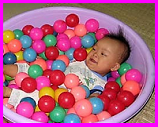 Students in grades 6 to 9 learn about biomedical engineering and the human sensory system, then follow the engineering design process to create sensory-integration toys for youngsters with developmental disabilities.
Students in grades 6 to 9 learn about biomedical engineering and the human sensory system, then follow the engineering design process to create sensory-integration toys for youngsters with developmental disabilities.
Read More
Filed under: Class Activities, Grades 6-8, Lesson Plans | Comments Off on Sensory Toys Make Sense!
Tags: adaptive technology, Biomedical Engineering, Class Activities, Engineering Design, Grades 6-8, Lesson Plan, sensory integration toys, special needs students, toy adaptation
Posted on September 22nd, 2017 by Mary Lord
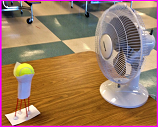 In this engineering design challenge about building in hurricane-prone regions, students learn that a solid base helps stabilize a structure by constructing, testing, and redesigning a tower that can support a tennis ball at least 18 inches off the ground while withstanding the wind from a fan.
In this engineering design challenge about building in hurricane-prone regions, students learn that a solid base helps stabilize a structure by constructing, testing, and redesigning a tower that can support a tennis ball at least 18 inches off the ground while withstanding the wind from a fan.
Note: While suitable for all ages, this activity works best with upper elementary students and older.
Read More
Filed under: Class Activities, Grades 6-8, Grades 9-12, Grades K-5 | Comments Off on Building for Hurricanes
Tags: build, Civil Engineering, Class Activities, Engineering Design, Grades 6-8, Grades 9-12, Grades K-5, hurricane, skyscraper
Posted on July 18th, 2017 by Mary Lord
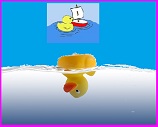 Failure – and learning from it – is integral to engineering design but shunned in most classrooms. ASEE PreK-12 engineering authorities Elizabeth A. Parry and Pamela S. Lottero-Perdue examined how elementary teachers’ perspective and use of “fail words” can change to support inquiry and learning.
Failure – and learning from it – is integral to engineering design but shunned in most classrooms. ASEE PreK-12 engineering authorities Elizabeth A. Parry and Pamela S. Lottero-Perdue examined how elementary teachers’ perspective and use of “fail words” can change to support inquiry and learning.
Read More
Filed under: K-12 Education News, Special Features | Comments Off on Research: Using ‘F Words’ in Elementary STEM
Tags: American Society for Engineering Education, elementary engineering, Elizabeth Parry, Engineering Design, learning from failure, Pamela Lottero-Perdue, research on engineering education, Research on Learning, research on teaching and learning, Teacher Resources
Posted on April 20th, 2017 by Mary Lord
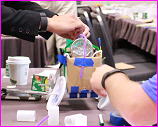 Discover how to use the engineering design process to enrich your students’ math and science learning in an immersive, week-long course presented by the Knowles Science Teaching Foundation and endorsed by ASEE. Register by June 15, 2017 for sessions starting June 26 (River Falls, WI) and July 22 (Philadelphia, PA).
Discover how to use the engineering design process to enrich your students’ math and science learning in an immersive, week-long course presented by the Knowles Science Teaching Foundation and endorsed by ASEE. Register by June 15, 2017 for sessions starting June 26 (River Falls, WI) and July 22 (Philadelphia, PA).
Photo from 2016 ASEE K-12 Engineering Education Workshop design activity
Read More
Filed under: For Teachers, K-12 Outreach Programs, Special Features | Comments Off on STEM PD: Integrating Engineering Design
Tags: American Society for Engineering Education, ASEE, Curriculum, Engineering Design, George Washington University, Knowles Science Teaching Foundation, NGSS, STEM professional development, Summer Programs (Teachers), Teacher Training
Posted on February 4th, 2017 by ASEE
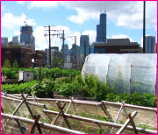 Students in grades 5-9 learn about urban planning as they assess the environmental health of their community, taking a walk around their neighborhood. They construct a map that identifies both positive and negative features and then recommend improvements.
Students in grades 5-9 learn about urban planning as they assess the environmental health of their community, taking a walk around their neighborhood. They construct a map that identifies both positive and negative features and then recommend improvements.
Read More
Filed under: Grades 6-8, Grades K-5, Lesson Plans | Comments Off on Lesson: Map the Green Space
Tags: Community Awareness, ELA, Engineering Design, Environmental Engineering, Environmental science, Grades 5-9, Grades 6-8, Lesson Plan, literacy
Posted on May 21st, 2016 by Mary Lord
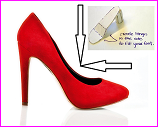 Teams of middle school students use the engineering design process to design, build, and test a pair of wearable platform or high-heeled shoes, taking into consideration the stress and strain on the wearer’s foot. They activity concludes with a “walk-off” to test the shoe designs and discuss the design process.
Teams of middle school students use the engineering design process to design, build, and test a pair of wearable platform or high-heeled shoes, taking into consideration the stress and strain on the wearer’s foot. They activity concludes with a “walk-off” to test the shoe designs and discuss the design process.
Read More
Filed under: Class Activities, Grades 6-8, Grades 6-8, Lesson Plans | Comments Off on Fancy Feet
Tags: Class Activities, Engineering Design, fashion, footwear, Grades 6-8, Lesson Plan, making, Materials Engineering, shoe design, sneaker, STEAM
Posted on April 21st, 2016 by Mary Lord
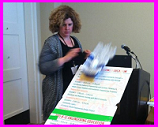 In this activity, teams of middle school students express their creativity while learning the fundamentals of engineering design, sustainability, and the basic physics of forces and motion by building a vehicle out of recycled trash that is capable of transporting liquid over rough terrain with as little spillage as possible.
In this activity, teams of middle school students express their creativity while learning the fundamentals of engineering design, sustainability, and the basic physics of forces and motion by building a vehicle out of recycled trash that is capable of transporting liquid over rough terrain with as little spillage as possible.
Note: This activity can be scaled for high school or upper elementary students.
Read More
Filed under: Class Activities, Grades 6-8, Grades 6-8, Lesson Plans | Comments Off on Trash Sliders
Tags: Class Activities, creativity, Earth Day, Engineering Design, Environmental Engineering, forces and motion, Grades 6-8, Lesson Plan, Recycling, STEAM, Sustainability, Trash
 The Lemelson-MIT Program, located within the School of Engineering at the Massachusetts Institute of Technology (MIT), is hosting three hands-on professional development workshops this summer aimed at helping middle and high school teachers nurture their students’ creativity and inventive mindsets.
The Lemelson-MIT Program, located within the School of Engineering at the Massachusetts Institute of Technology (MIT), is hosting three hands-on professional development workshops this summer aimed at helping middle and high school teachers nurture their students’ creativity and inventive mindsets.








 When “The Victors” peals from the 55-bell carillon high inside the University of Michigan’s Burton Tower, many students below can hum the famous fight song as they stroll. One group, though, also understands the engineering and skilled labor behind the resonant tones, having sculpted and poured metal to make carillon bells that achieve a particular sound in a course called Shaping the Sound of Bronze.
When “The Victors” peals from the 55-bell carillon high inside the University of Michigan’s Burton Tower, many students below can hum the famous fight song as they stroll. One group, though, also understands the engineering and skilled labor behind the resonant tones, having sculpted and poured metal to make carillon bells that achieve a particular sound in a course called Shaping the Sound of Bronze.  Students in grades 6 to 9 learn about biomedical engineering and the human sensory system, then follow the engineering design process to create sensory-integration toys for youngsters with developmental disabilities.
Students in grades 6 to 9 learn about biomedical engineering and the human sensory system, then follow the engineering design process to create sensory-integration toys for youngsters with developmental disabilities. In this engineering design challenge about building in hurricane-prone regions, students learn that a solid base helps stabilize a structure by constructing, testing, and redesigning a tower that can support a tennis ball at least 18 inches off the ground while withstanding the wind from a fan.
In this engineering design challenge about building in hurricane-prone regions, students learn that a solid base helps stabilize a structure by constructing, testing, and redesigning a tower that can support a tennis ball at least 18 inches off the ground while withstanding the wind from a fan. Failure – and learning from it – is integral to engineering design but shunned in most classrooms. ASEE PreK-12 engineering authorities Elizabeth A. Parry and Pamela S. Lottero-Perdue examined how elementary teachers’ perspective and use of “fail words” can change to support inquiry and learning.
Failure – and learning from it – is integral to engineering design but shunned in most classrooms. ASEE PreK-12 engineering authorities Elizabeth A. Parry and Pamela S. Lottero-Perdue examined how elementary teachers’ perspective and use of “fail words” can change to support inquiry and learning. Discover how to use the engineering design process to enrich your students’ math and science learning in an immersive, week-long course presented by the Knowles Science Teaching Foundation and endorsed by ASEE. Register by June 15, 2017 for sessions starting June 26 (River Falls, WI) and July 22 (Philadelphia, PA).
Discover how to use the engineering design process to enrich your students’ math and science learning in an immersive, week-long course presented by the Knowles Science Teaching Foundation and endorsed by ASEE. Register by June 15, 2017 for sessions starting June 26 (River Falls, WI) and July 22 (Philadelphia, PA). Students in grades 5-9 learn about urban planning as they assess the environmental health of their community, taking a walk around their neighborhood. They construct a map that identifies both positive and negative features and then recommend improvements.
Students in grades 5-9 learn about urban planning as they assess the environmental health of their community, taking a walk around their neighborhood. They construct a map that identifies both positive and negative features and then recommend improvements. Teams of middle school students use the engineering design process to design, build, and test a pair of wearable platform or high-heeled shoes, taking into consideration the stress and strain on the wearer’s foot. They activity concludes with a “walk-off” to test the shoe designs and discuss the design process.
Teams of middle school students use the engineering design process to design, build, and test a pair of wearable platform or high-heeled shoes, taking into consideration the stress and strain on the wearer’s foot. They activity concludes with a “walk-off” to test the shoe designs and discuss the design process. In this activity, teams of middle school students express their creativity while learning the fundamentals of engineering design, sustainability, and the basic physics of forces and motion by building a vehicle out of recycled trash that is capable of transporting liquid over rough terrain with as little spillage as possible.
In this activity, teams of middle school students express their creativity while learning the fundamentals of engineering design, sustainability, and the basic physics of forces and motion by building a vehicle out of recycled trash that is capable of transporting liquid over rough terrain with as little spillage as possible.